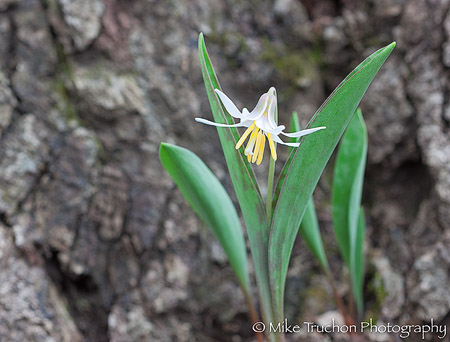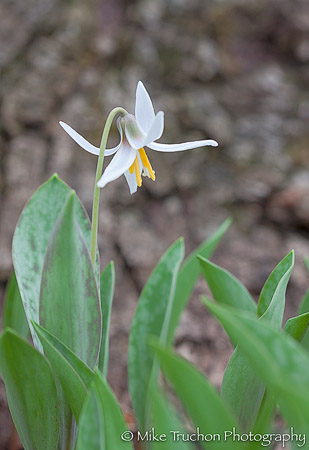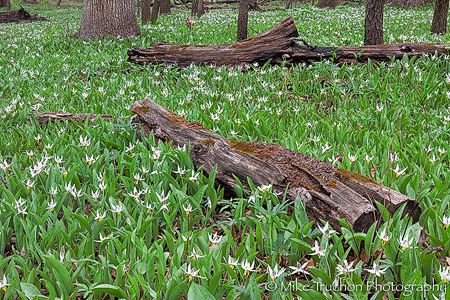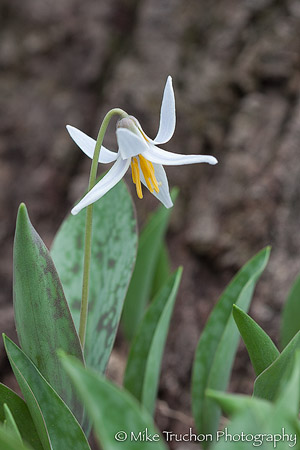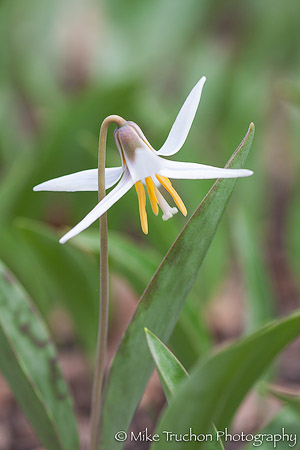John Muir once said “Most people are on the world, not in it”, on a peaceful May afternoon I was truly in the world. At the edge of Tomahawk Slough there is an oak savanna. Within this oak savanna lay a colony of white trout lily. These lovely spring ephemerals spread across the burnt logs and rising oaks to carpet the woodland floor in green and white.
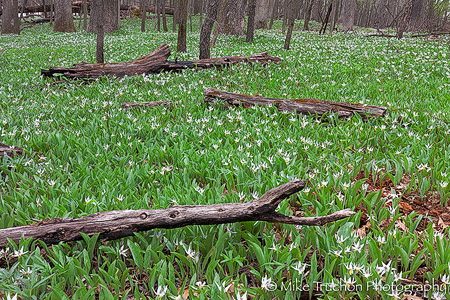
The long slender stem of the trout lily supports a delicate white bell-shaped flower, often tinged with lavender. The flower typically hangs downward until the sun warms the air and the petals turn upward to display the brilliant yellow stamen and white pistil. The trout lily flower is guarded by two oblong green and maroon mottled leaves. Those speckled leaf markings resemble the markings of a brown or brook trout thus their name, trout lily.
These delicate plants grow slowly. Most trout lilies in a colony are juvenile single leafed plants that do not produce a flower. A mature plant will have two oblong leaves and produce the dazzling six-petaled flower. It can take from five to seven years for a flower to mature from a seed. In the woodlands trout lily typically reproduce from already existing croms (bulbs) and underground runners. Though croms speed the propagation of colonies at a much faster rate it still can take several years for a plant to mature.
Trout Lilies are essential to the health of the forest. Due to their ability to grow in lower soil temperatures, they can absorb springtime rains that contain nutrients such as nitrogen and phosphorus that would otherwise runoff into waterways. As spring turns to summer their leaves die off and release those beneficial nutrients back into earth so other growing plants can flourish.
Though only in the world for a short time in spring, the small and delicate trout lily has an important role in our environment. Their graceful beauty is fleeting so enjoy them while they here.

